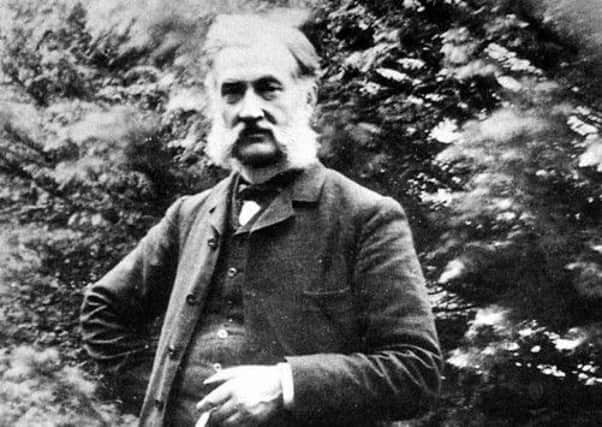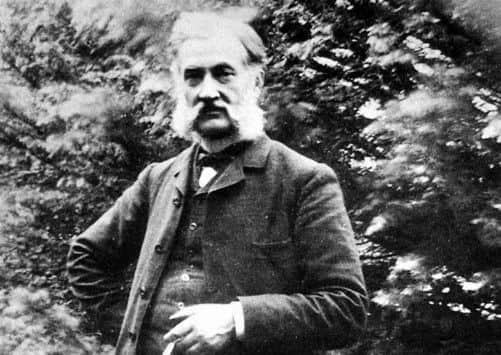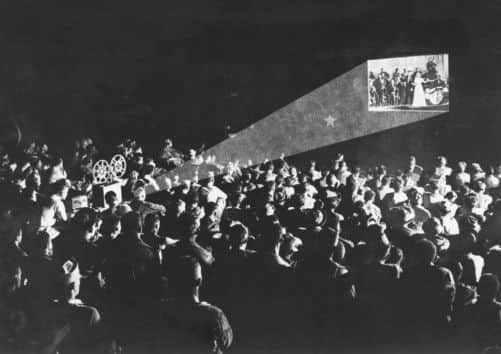Louis Le Prince: Time to honour cinema’s forgotten pioneer


Seven long years ago Leeds-born David Wilkinson, a film producer and former actor, embarked on a quest to rewrite history and restore the reputation of a man who, for many, has been heralded as “the Father of Cinematography”.
That man was Louis Aimé Augustin Le Prince, an ex-pat Frenchman living and working in Leeds who, in October 1888, shot the first motion pictures on paper film using a single-lens camera.
Advertisement
Hide AdAdvertisement
Hide AdThese fleeting sequences – known as Roundhay Garden Scene and Traffic on Leeds Bridge – have been accurately dated to the autumn of that year, thus crediting Le Prince as the first of the many Victorian pioneers to invent cinema. And he did it in Yorkshire.


Yet the full story of what happened when is shrouded in mystery and the truth marred by claim and counter-claims. Historians continue to debate the veracity of Le Prince’s invention and around the same time, Thomas Edison in America and the Lumière brothers in France were also racing towards the finish line in what became a desperate sprint for glory.
In the end it was the Lumières who secured a vital patent in 1895. Edison was close behind. And Le Prince? What of the man who spent countless nights toiling over his process in a workshop on Woodhouse Lane in Leeds? Where does poor, forgotten Louis figure in this Machiavellian tale of dark intrigue and corporate skulduggery?
The answer is entwined with more than 120 years of despair, penury, accusations, paranoia and a lonely yearning for closure. For on September 16, 1890, in the spirit of the very best plot twists, after boarding a Paris-bound train in Dijon, Louis Le Prince vanished off the face off the earth.
Advertisement
Hide AdAdvertisement
Hide AdLe Prince’s English wife, Lizzie, suspected murder and believed agents acting for Thomas Edison had done away with her husband when he was on the brink of patenting his work in America.


Her claims were perhaps unsurprisingly embraced by son Adolphe and daughter Marie who battled for years for some semblance of official recognition. Adolphe, who featured in his father’s embryonic films, died in a freak hunting accident. Again, murder was suspected. Again the finger of suspicion was pointed at the patent-gobbling Edison. But in December 1930 Marie enjoyed a belated tribute to her father and his discovery when a bronze memorial tablet was erected at 160 Woodhouse Lane, the site where his workshop had stood.
Among the people present that day was Frederick Mason, the woodworker who, as a young man, had assisted Le Prince with custom-made cabinets for his moving picture machines.
Next month it will be 125 years since Le Prince filmed his sequences in Leeds. For David Wilkinson, a former actor turned film distributor and producer, Le Prince’s rehabilitation is overdue.
Advertisement
Hide AdAdvertisement
Hide AdAs a teenager Wilkinson, now 57, starred in a West End production of The Winslow Boy opposite Richard Todd. On film he was Stuart Sutcliffe in The Birth of the Beatles. As a producer he handled Sir Anthony Hopkins’ directorial debut and distributed scores of modest British and Irish movies.
His latest project eclipses them all. Wilkinson has spent seven years building funding for a feature-length documentary, The First Film. Shooting began in the spring in Leeds before Wilkinson and his all-Yorkshire crew headed to Paris. More filming is earmarked for New York where Martin Scorsese may contribute his thoughts on this most contentious topic.
Wilkinson says his Yorkshire roots are fundamental in understanding his need to tell Le Prince’s story. He is, he says, “on a mission” to prove Le Prince’s right to be hailed as the inventor of cinematography.
He is open about the problems he has faced, both in securing backing from people within the film industry and an acceptance of Le Prince’s position in cinema history.
Advertisement
Hide AdAdvertisement
Hide Ad“They don’t believe it,” says Wilkinson flatly. “But when I was first told this at Benton Park School in Rawdon in the late 1960s, I didn’t believe it either. In the early 1980s I changed my mind and submitted it as an idea to Yorkshire Television, Channel 4 and the BBC. Nobody was interested. Over the years I found no-one in the British film industry believed this story. Only Mark Cousins and a few obscure film historians have written about Louis.”
Which seems to suggest that the history books are right and Le Prince, regardless of the mystery of his tragic disappearing act, was not a winner but a loser.
“But those who recorded the facts got it wrong,” claims Wilkinson. “Had Le Prince invented film in Paris or London or New York I can’t help thinking that we would all know about this fact.
“There are American and British patents. A few frames of the film exist and are at the National Media Museum in Bradford. There is written testament. It’s all there in black and white. We have had to dig to find it but it is there. His untimely death also dates the film to before Edison and the Lumières.”
Advertisement
Hide AdAdvertisement
Hide AdWilkinson is reluctant to cast stones but nonetheless he is staggered at the lack of interest and support shown by the movers and shakers in Leeds. He claims to have written to all the city’s politicians; only one MP responded.
“With the exception of Hilary Benn and Bernard Atha it tells me that all of them are not interested in this very important milestone in the history of Leeds. Luckily there are so many ordinary people in the city who support us and want the world to know that this city is the birthplace of the moving image.
“The Metropolitan University has bent over backwards to help us. I have to say I was shocked that the political representatives of Leeds would give me the cold shoulder on this. The film establishment in London is one thing but those in power in Leeds? It is a story that needs to go global.”
One of the film’s backers is Sir Robert Worcester, the former owner of Mori polls, “an American who wants this story out there,” says Wilkinson. Another supporter is a former Lord Mayor of Leeds who wishes to remain anonymous.
Advertisement
Hide AdAdvertisement
Hide Ad“Other funders had to pull out for cash flow reasons. This leaves us problems in the finishing of the film.
“It’s the hardest film I have ever raised money for because no-one believes us even though the facts are all there if you look hard enough. It is a really sad fact: it can be proved that moving pictures started in Britain. Not America. Not France.”
Among Wilkinson’s supporters is Liz Rymer, former director of Leeds International Film Festival and now head of cinema at Leeds Trinity University. She was part of the team that championed Le Prince and the centenary of his films in 1988 during the festival’s debut. She appears in The First Film. “Louis Le Prince is of world importance with regard to the development of moving pictures and Leeds should be supremely proud of its links with its role in movie history. It is the true home of the world’s greatest, most popular, and most enduring art form,” she says.
David Wilkinson is buoyed by such sentiments. With a summer 2014 release date scheduled for his documentary he faces raising a further £50,000 to complete the project. Referencing Le Prince’s travails and strange fate he calls it “a small obstacle” that will be overcome.
Advertisement
Hide AdAdvertisement
Hide Ad“I will prove this fact and get the history books rewritten,” he says. “Louis deserves it.”
To watch a video of Louis Le Prince’s early footage go to yorkshirepost.co.uk/video
From silent movies to the the birth of 3D – The early years of film
The beginnings of film might by have been murky, but one thing was clear, by the early years of the 20th-century what started out as little more than a novelty was soon being touted as a large scale entertainment industry.
Advertisement
Hide AdAdvertisement
Hide Ad1906: The first full-length feature film The Story of the Kelly Gang, which runs to more than an hour, is screened in Melbourne.
1911: Winsor McCay, later dubbed the father of animation, films an adaptation of his cartoon strip Little Nemo in Slumberland. Hand-coloured frame by frame, the animation lasts only two minutes and is silent
1927: The Jazz Singer hits cinemas. Starring Al Jolson, the film is recognised as the first “talkie,” even though the sound consisted mostly of music with only a couple hundred spoken words.
1928: Walt Disney’s first animated cartoon is released and marks the start of the career of one of the most enduring and popular filmmakers.
Advertisement
Hide AdAdvertisement
Hide Ad1939: Having initially being rejected by many studios, Gone With the Wind shows the power of the blockbuster. The Civil War epic, starring Clark Gable and Vivian Leigh, eclipses all previous box office records earning more than $200m.
1953: With fears the rise of television could dent the profits of the big studios, cinema hits back with the release of a number of 3D films, including House of Wax, The French Line and the Creature from the Black Lagoon.